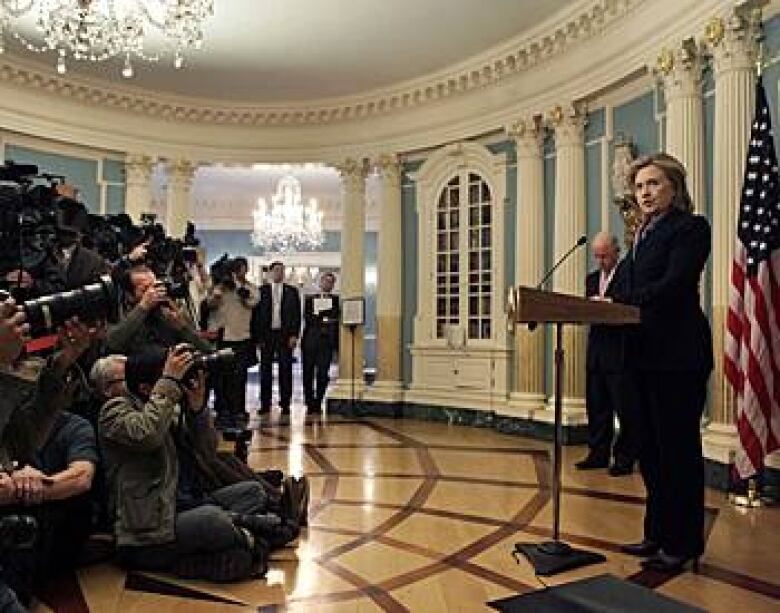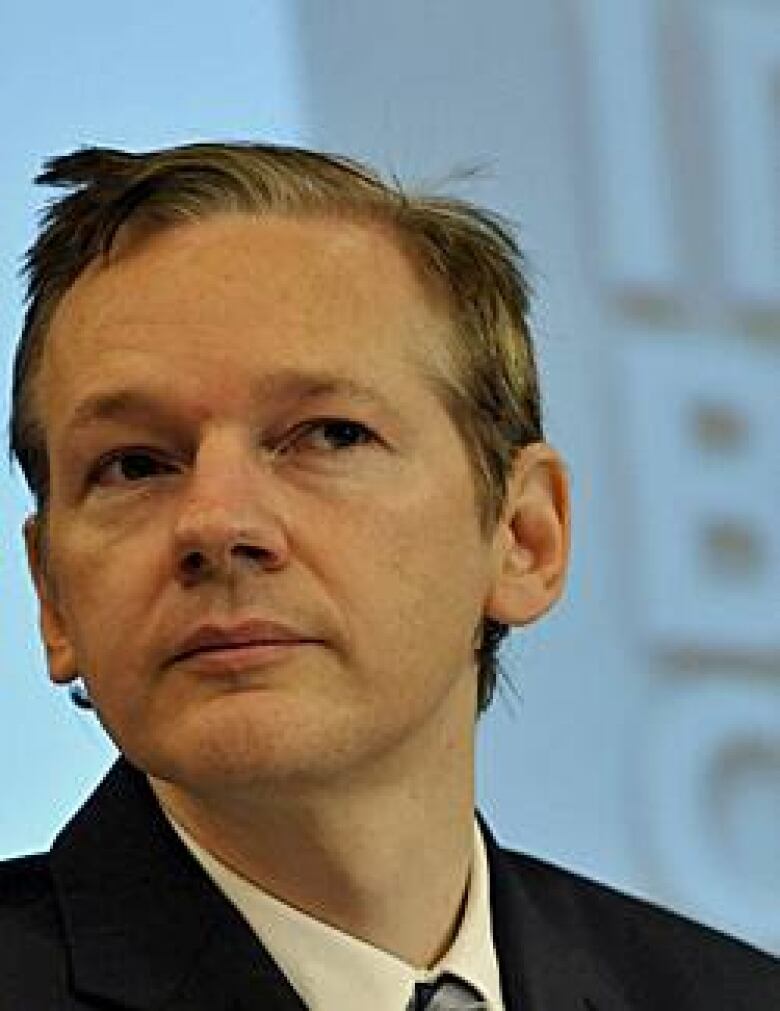Don't mistake WikiLeaks for how diplomacy really works

When the website WikiLeaks released about a quarter of a million U.S. diplomatic "cables" over this past week, the revelations were front-page news largely for one reason. The documents are all recent.
According to the New York Times, one of the news organizations that had access to the WikiLeaks data in advance, most cables are from the past three years.
So this massive document dump is all about stories that are in the news now.
Overlooked in much of this is that most of these documents are unclassified or restricted at a low level. Only 11,000 are stamped Secret.
Some documents are routine, some are gossip a grab bag of observations about leaders and gripes from members of a royal family. Others cover what may be key intelligence about often mysterious adversaries such as Iran and North Korea.
An author and historian,Robin Rowlandwas photo editor for CBC News Online until March 2010. He now lives in Northwestern British Columbia. His original article on Matthew Bullock appeared in Hamilton This Month in April 1989.
But even taken as a whole do they constitute anything like a true picture of what is going on?
The combination of court gossip and pertinent observation has been the stuff of diplomatic communication since the rise of human civilization.
Some of the clay tablets discovered in the palaces of the Hittite empire, in what is now Turkey, are about potential diplomatic alliances with a king of Troy named Alaksandu, worried about raids from Mycenaean Greeks.
Those clay tablets, more than 3,000 years old, are, of course, an incomplete record. There are no clear records even of the actual Trojan War, a generation or so later.
The WikiLeaks revelations are much like those Hittite clay tablets. Incomplete.
Not only is there no U.S. material at higher levels of classification, there is nothing from the many other sides in these concerns.
As U.S. Secretary of State Hillary Clinton quipped at her post-WikiLeaksnews conferenceon November 29, "I can tell you that in my conversations, at least one of my [foreign] counterparts said to me, 'Well, don't worry about it. You should see what we say about you.'"
Real cables
Once, a quarter century ago, the U.S. State Department had its own analog, paper-based Wiki, an integrated, cross-referenced information system that covered almost every diplomatic dispatch going back centuries on millions of three by five inch index cards.

In the 1980s, if a researcher wanted to check out what had been said on some diplomatic cable 30 years or more after the fact you would walk from the elegant neoclassical reading rooms of the National Archives on Pennsylvania Avenue in Washington down a long, faded corridor to a dusty room with a large chain-link cage.
There, a grandmotherly woman who probably knew more American diplomatic secrets than anyone else in Washington, would sign you in and leave you alone with row after row of wooden file cabinets, each small drawer containing hundreds of those three by five cards, indexing every single U.S. diplomatic dispatch, cross-referenced by name, subject and file number.
Dispatches from the 19th century are handwritten, often in an elegant script. By the 20th century, the dispatches and cables are typed on a form addressed to "The Honourable The Secretary of State."
I was there to research American diplomatic intelligence on Canada during Prohibition. But, just as a Wiki works today on the web, serendipity triumphed and on one of those cross-referenced file cards I found out about Matthew Bullock, an African-American man who caused quite the cross-border incident in 1921 when he fled a North Carolina lynch mob to seek refuge in Hamilton, Ont.
Naturally I wanted to know more.
The Bullock case
After reading the State Department file it was clear that the Bullock case had provoked a huge diplomatic stir for both the American and Canadian governments and was a big story on both sides of the border. (The New York Times wrote five editorials on the case.)

In January 1921, Matthew Bullock helped defend his community against a mob in Norlina, N.C., that had already lynched his 17-year-old brother and another young black man. He then fled to Canada and settled in Hamilton.
A year later, authorities in North Carolina found out where Bullock was staying and demanded his extradition on a charge of assault to commit murder. And that is where the story gets interesting, depending on which set of correspondence you want to refer to.
To get the full picture, I also requested archival records from the National Archives in Ottawa, North Carolina State archives and the National Association for the Advancement of Coloured People in the U.S. because it had been an important player.
Bullock was a veteran of the First World War and so it was not only the African-Canadian community that was lobbying Ottawa to oppose the extradition. Veterans' organizations also wrote to Prime Minister William Lyon Mackenzie King on Bullock's behalf.
Meanwhile, U.S. newspaper reports claimed that the Ku Klux Klan was planning to come to Canada to kidnap Bullock.
The legal issue
Under a treaty signed in 1916, both the U.S. and Canada depended on affidavits to justify an extradition and that is still the procedure today.
In the Bullock case, however, Hamilton Judge Colin George Snider demanded that witnesses come from North Carolina and, when none appeared, he refused to extradite.
That was one of the very few cases in history where Canada has refused to extradite a suspect to the United States and should have caused a huge diplomatic uproar in both capitals. But that is where the back-scenes record gets interesting.
Charles Evans Hughes, the U.S. secretary of state at the time, penned a strongly worded letter to Ottawa complaining about Snider's decision and suggesting it made a mockery of the extradition treaty.

But other documents show that Hughes and the State Department were taking a different approach with North Carolina. The State Departmenttold authorities there that requiring oral testimony was within the discretion of the judge under Canadian law.
As for Ottawa, the Justice Department closed the file without a formal reply to Secretary Hughes.
A department lawyer wrote: "I am disposed to think the judge was wrong in rejecting the affidavits. At least I am not satisfied that he was right and he does not produce any authority. Therefore I feel somewhat embarrassed in answering the United States dispatch.
"Possibly it will not be revived. Meantime please put these papers on the file and hold for future consideration if necessary."
Diplomacy at work? The hard fact behind the exchange of niceties and formal complaints was that the U.S. government did not want Matthew Bullock extradited to a state where he would most likely be lynched. And neither did the government of Mackenzie King.
It chose not to appeal Snider's decision and diplomatically did not reply to Hughes' pro forma letter.
Moving on
As for Matthew Bullock, he disappeared from history. There were newspaper reports at the time that he eventually became a British subject and the money from his defence fund was used to put him on a steamship for Great Britain, well out of reach of the KKK.
Still, the Bullock case shows the problems with the WikiLeaks' data dump.
If a 1920s' WikiLeaks had exposed the fact the either the American or Canadian governments had simply filed away Judge Snider's decision on extradition, the U.S. government would have been under enormous pressure from the southern states and southern congressmen to demand Bullock's return.
Ottawa would probably have been forced to appeal Snider's decision and a higher court likely would have upheld the use of affidavits alone, as set out in an international treaty.
Of course, governments and diplomats have covered up and lied since before those Hittite kings faced an army of invading Greeks. But today, with the rise of public relations specialists and excessive government spin and stonewalling, there seems to be much less trust in governments to do the right thing.

Clearly there are going to be more leaks, more data dumps. If, somehow, WikiLeaks is completely shut down, a replacement will pop up somewhere, just as it has been impossible to shut down the many media piracy and file-sharing sites.
The ageing diplomatic and intelligence establishments are simply going to have to live with the new digital world. If they want to keep the really important secrets secret, then there will have to be the restoration of trust, so there are fewer incentives to leak. And that probably means more openness in the first place.
A postscript. After the Ronald Reagan budget cuts in the early 1980s, the U.S. National Archives dismantled its treasure trove of diplomatic dispatches and converted everything to microfilm, which is much more difficult to thumb through.
That destroyed the Wiki-nature of the old pieces of cardboard. The modern electronic world has restored the ability for cross-referenced serendipity, as diplomats around the world found out this week.












_(720p).jpg)


 OFFICIAL HD MUSIC VIDEO.jpg)
.jpg)



























































































